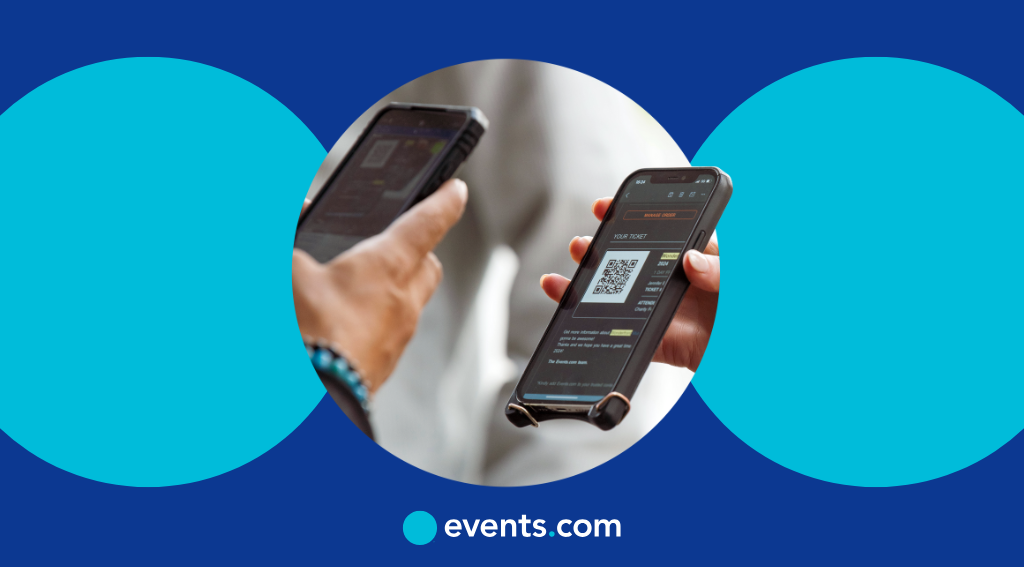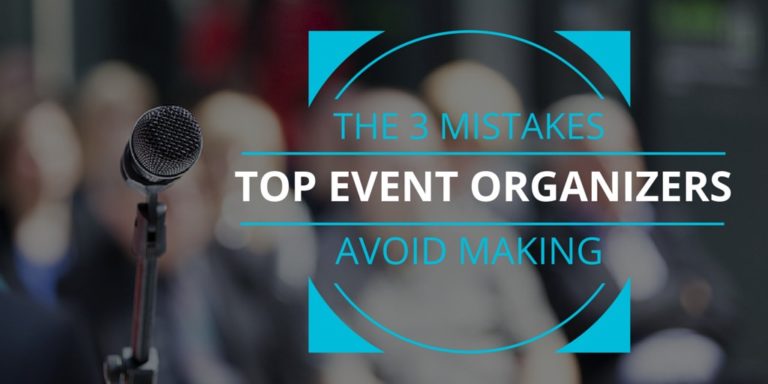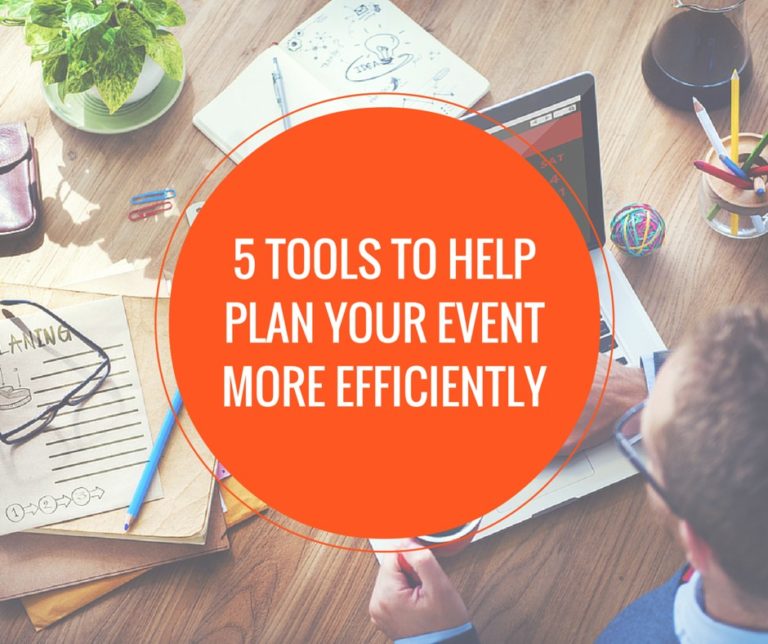Planning an event isn’t without its caveats. From setting clear goals and picking the right format to figuring out how to keep people engaged, it can feel like a whirlwind of decisions (and emotions). Whether you’re organizing a food festival or a charity run, the basics are the same. As an event organizer, you’re wearing a lot of hats and managing a lot of different tasks, all while making sure everything runs smoothly.
But here’s the good news: with the right tools and a solid roadmap, you can pull it off. This event planning guide will walk you through everything you need to know how to plan a successful event, one that’s not just well-run, but one people actually want to show up for.
Understanding your audience and goals
Knowing your audience is the cornerstone of planning any successful event. Start by identifying exactly who your attendees are and what they hope to gain. Are they industry professionals eager to network and share insights, or community members looking for a fun, memorable outing? By understanding their motivations, whether it’s career growth, social connection, or just entertainment, you can turn a basic event into one that truly resonates. Understanding your audience comes down to two key practices:
1. Knowing who they are
Knowing your audience is the cornerstone of planning any successful event. Start by pinpointing exactly who your attendees are and what they hope to gain. Are they industry professionals eager to network and exchange insights? Or are they community members looking for a fun, memorable outing? By digging into their motivations—whether it’s career growth, social connection, or pure entertainment—you can transform a generic gathering into an experience that actually resonates.
2. Setting clear goals
Once you’ve nailed down who your target audience is, the next step is to set specific, attainable goals. Maybe you’re looking to boost brand awareness, generate qualified leads, or create an unforgettable attendee experience. Whatever the goal, frame it using the SMART framework: Specific, Measurable, Achievable, Relevant, and Time‑bound. Instead of a vague objective like “increase engagement,” go for something like “grow social-media mentions by 30% during the event week through live polls and photo contests.”
With a clear understanding of your audience and SMART goals in place, you’re not just throwing things at the wall to see what sticks. You’ve got a solid operational plan and a run of show that guide every decision, from choosing session topics and speakers to tailoring your marketing message. Strong objectives don’t just keep your team aligned; they make it easier to measure event success, adapt as needed, and ultimately create an event that’s not just well-run, but truly unforgettable.
Choosing the perfect venue and date
Selecting the right venue and date is the foundation of any successful event. The location should be accessible, with ample parking, convenient public transit options, and ADA‑compliant entrances and restrooms, so every guest can arrive and move around with ease. Just as important is finding a space that fits your headcount comfortably and offers the right essentials: reliable AV, strong Wi‑Fi, and, ideally, on‑site catering to simplify logistics. And of course, don’t overlook the atmosphere. Whether it’s a sleek conference center, a rustic barn, or an open‑air pavilion, the setting should not only support your goals but also reflect the tone of your event and leave a lasting impression.
Timing is just as essential. Avoid holidays, school breaks, and major local or industry events that could pull your audience elsewhere. Consult community and conference calendars to steer clear of clashes, and consider your attendees’ routines, weekday vs. weekend, morning vs. evening, to maximize turnout.
Additionally, seasonality and weather can’t be overlooked, especially for outdoor gatherings. Always have a rain‑plan or indoor backup for open‑air events, and be mindful of travel challenges during peak holiday seasons. Picking a date 6–12 months out not only secures popular venues but also gives you plenty of time to implement your event marketing strategies and fine‑tune logistics.
A thorough site visit brings your planning to life. Walking the space at the same time of day your event will run lets you test lighting, acoustics, and traffic flow. Use this opportunity to meet the venue’s tech team, verify bandwidth for streaming, and scout nearby hotels, restaurants, and attractions that your guests might need.
Finally, don’t forget virtual and hybrid options. Your “venue” could be a digital platform, so evaluate capacity limits, breakout‑room functionality, chat and polling features, and sponsor‑booth capabilities. Make sure your virtual event is just as engaging as an in-person event. If you’re hosting a hybrid event, schedule sessions at times that suit both in‑person and remote attendees across time zones, and run full tech rehearsals to iron out streaming kinks. With the right blend of physical space, timing, and digital infrastructure, you’ll create an experience that’s seamless—and unforgetable—for everyone involved.
Leveraging technology for seamless event management
Incorporating technology into event planning has become essential for enhancing efficiency and delivering a superior attendee experience. Event management software automates critical tasks such as registrations, ticketing, and communications, reducing manual errors and saving valuable time. Mobile applications add another layer of ease, guiding attendees with interactive maps, real-time updates, and built-in networking tools that keep them connected and in the loop from start to finish.
Behind the scenes, technology also plays a pivotal role in streamlining logistics. Digital tools facilitate real-time reporting on sales and check-in statistics, enabling informed decision-making during the event. Point of Sale (POS) hardware equipped with tablets and card readers allows for secure on-site sales of tickets and merchandise. Check-in kits with all the necessary devices and accessories ensure guests move through entry points smoothly, without the bottlenecks.
By integrating these technologies, event organizers can enhance operational efficiency and provide a seamless experience for attendees. We’ll delve deeper into how Events.com can help you succeed in the next sections of this event planning guide.
Crafting engaging content and activities
The heart of any successful event lies in its content and the activities that bring it to life. Rather than assembling a series of informational sessions, aim to design an agenda that blends creativity with purpose.​
Begin by incorporating icebreaker activities to set a welcoming tone. Simple games like “Two Truths and a Lie” or interactive polls can encourage participation and ease attendees into the event atmosphere. These initial interactions help break down social barriers, fostering a sense of community from the outset.​
As the event progresses, maintain engagement through interactive event ideas such as Q&A sessions, live polls, and networking breaks. These activities not only keep the audience involved but also provide valuable insights and opportunities for connection. For instance, live polls can gauge audience opinions in real-time, while structured networking sessions facilitate meaningful interactions among participants.​
Ensure that all content and activities align with your event’s goals and resonate with your audience. Tailoring experiences to attendee interests enhances relevance and impact. Whether through hands-on workshops, panel discussions, or collaborative projects, the key is to create an environment where participants feel engaged and valued.​
If you’re seeking fresh, innovative ideas to elevate your event, consider utilizing Events.com’s AI-powered event idea generator. This tool can provide tailored suggestions based on your event type, audience, and objectives, helping you craft unique experiences that captivate attendees.​
By thoughtfully curating content and activities, and leveraging advanced planning tools, you transform your event from a passive experience into an interactive journey that leaves a lasting impression.
Post-event evaluation and follow-up
The conclusion of your event marks the beginning of a critical phase: post-event evaluation and follow-up. This stage is essential for assessing the event’s effectiveness, understanding attendee experiences, and gathering insights to inform future planning.​
Begin by collecting comprehensive data immediately after the event. This includes analyzing attendance figures, session participation rates, and engagement levels from interactive elements like Q&A sessions and polls. Utilize your event management software to access detailed reports on these key event metrics, which can highlight which aspects of the event resonated most with attendees. Promptly sending out feedback surveys, ideally within 24 to 48 hours, ensures responses are fresh and more accurate.​
Following up with attendees is equally important. Send personalized thank-you emails that express genuine appreciation for their participation. Include highlights from the event, such as key takeaways or memorable moments, and provide access to additional resources like recorded sessions or presentation materials. This not only reinforces the value of the event but also keeps the conversation going.​
Moreover, use this opportunity to maintain engagement by sharing information about upcoming events or related content that might interest your audience. Personalized communication helps in building lasting relationships and encourages continued participation in future events.
How Events.com can help you succeed
When it comes to event planning, there’s no shortage of moving parts to manage. That’s where Events.com comes in. It’s a comprehensive event management platform designed to help you streamline every aspect of your event, from registration to promotion. Whether you’re wondering how to plan a successful event or looking for the best event planning tips for organizers, Events.com has the tools you need to succeed.
One of the main benefits of using Events.com is its ability to handle all the details seamlessly. With features like customizable event pages, seamless registration and ticketing, and real-time analytics, the platform helps you focus on the bigger picture. Instead of worrying about technical issues, you can concentrate on delivering a memorable experience for your attendees. This is a key part of the event planning tips for organizers, leveraging technology to simplify your workflow.
Another important aspect is the built-in marketing tools that Events.com offers. These tools can help boost your event’s visibility, attract a larger audience, and keep attendees engaged throughout the process. If you’re looking for how to plan a successful event, remember that effective marketing is crucial. Events.com Promote makes it easy to handle all of that, so you don’t have to juggle multiple platforms or worry about missing key opportunities.
In short, whether you’re organizing a small event or a large-scale festival, Events.com can provide the support you need to pull off a smooth, successful event. One of the best event planning tips for organizers is having the right platform in place to handle the logistics so you can focus on what matters most: your attendees. Want to know more? Book a demo today and see how Events.com can streamline your event planning process!
Frequently asked questions about event organization
1. What is event management?
Event management is the process of planning, organizing, and executing an event from start to finish. It involves tasks like budgeting, venue selection, scheduling, coordinating with vendors, and ensuring everything runs smoothly on the day of the event.
2. What is an event management platform?
An event management platform is a digital tool that helps organizers plan, manage, and execute events efficiently. It typically includes features for registration, ticketing, event promotion, and real-time analytics, streamlining the entire event planning process.
3. What to consider when planning an event?
When planning an event, it’s crucial to consider the event’s purpose, budget, venue, audience, and timeline. Additionally, choosing reliable vendors, promoting the event effectively, and preparing for potential issues will ensure the event runs smoothly and meets your goals.




